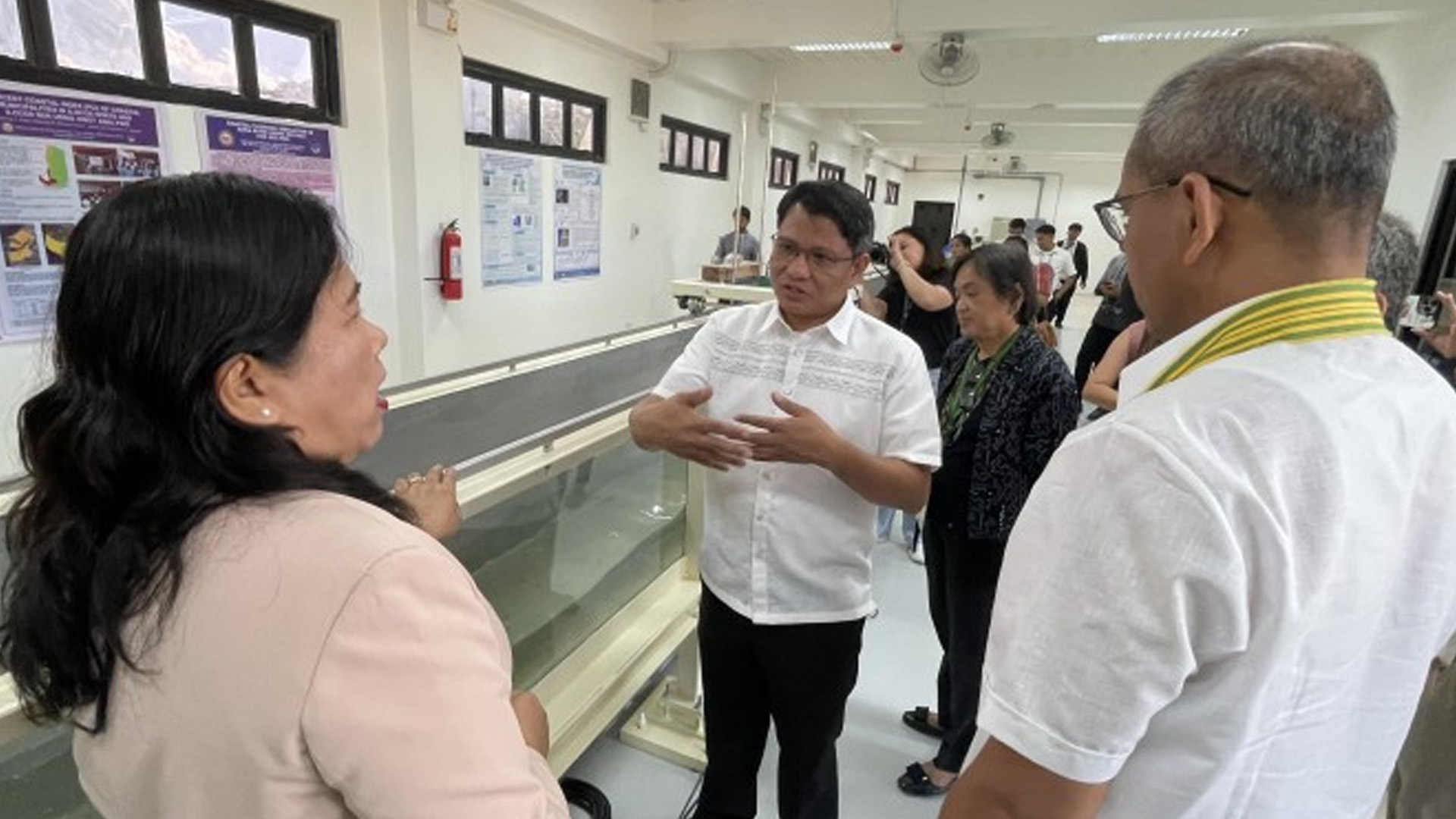A two-dimensional wave flume facility was unveiled on Monday at the Mariano Marcos State University (MMSU) in Batac City, Ilocos Norte to simulate complex wave and water movements in a controlled environment.
Funded by the Department of Science and Technology (DOST) and worth over PHP41 million, the country’s first wave flume laboratory is a useful tool to test different coastal protection structures meant to address concerns on climate change, disaster risk reduction, and sustainable coastal management, according to Dr. Nathaniel Alibuyog, program leader of the Coastal Engineering and Management Research and Development Center (COASTER) of MMSU.
As the Philippines has one of the longest coastline in the world measuring over 36,000 kilometers (22,549 mi), Alibuyog said the new facility would help bridge gaps in coastal engineering by developing science-based technologies and innovations, strengthening human resource capacity in coastal engineering research and management, and shaping policies to enhance coastal community resilience against flooding and storm surge.
“This is useful for us on disaster preparedness because in here, we can come up with appropriate design for specific areas in the country,” Alibuyog said.
Alibuyog’s team has come up with some varied geometric design of seawall to dissipate wave forces that will be tested at the facility to address coastal erosion, one of the most disturbing environmental problems that the country faces today.
“With all the designs that we are doing here, we will be able to reduce scouring,” he said, pointing out that currently, the country’s response to these problems is constructing hard structures such as seawalls and groins that are reactionary and done without deeper analysis and planning for the long-term effects of these structures on the natural coastal processes.
Based on assessment of coastal flood protection structures in Ilocos Region, Alibuyog reported that 68 percent of the structures are visually in ideal condition and about five percent is in need of major refurbishment or replacement.
In a separate interview on Monday after the ceremonial inauguration, Dr. Enrico Paringit, director of the DOST-Philippine Council for Industry Energy and Emerging Technology Research and Development, said harnessing the powers of science and technology would ensure the protection of communities and properties against the ravages of typhoon.
“Having an experimental facility (to test design materials) will save us a lot of time, resources, and headaches rather than doing the testing itself in an actual project site,” Paringit said.
He also added that the facility is in response to the directive of President Ferdinand R. Marcos Jr. to ensure that designs for flood control projects are well-thought of. (PNA)









